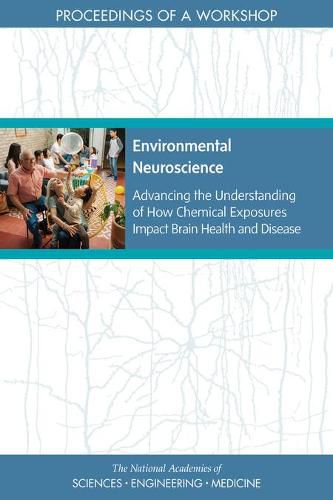Readings Newsletter
Become a Readings Member to make your shopping experience even easier.
Sign in or sign up for free!
You’re not far away from qualifying for FREE standard shipping within Australia
You’ve qualified for FREE standard shipping within Australia
The cart is loading…






Humans are potentially exposed to more than 80,000 toxic chemicals in the environment, yet their impacts on brain health and disease are not well understood. The sheer number of these chemicals has overwhelmed the ability to determine their individual toxicity, much less potential interactive effects. Early life exposures to chemicals can have permanent consequences for neurodevelopment and for neurodegeneration in later life. Toxic effects resulting from chemical exposure can interact with other risk factors such as prenatal stress, and persistence of some chemicals in the brain over time may result in cumulative toxicity. Because neurodevelopmental and neurodegenerative disorders - such as attention-deficit hyperactivity disorder and Parkinson’s disease - cannot be fully explained by genetic risk factors alone, understanding the role of individual environmental chemical exposures is critical.
On June 25, 2020, the National Academies of Sciences, Engineering, and Medicine’s Forum on Neuroscience and Nervous System Disorders hosted a workshop to lay the foundation for future advances in environmental neuroscience. The workshop was designed to explore new opportunities to bridge the gap between what is known about the genetic contribution to brain disorders and what is known, and not known, about the contribution of environmental influences, as well as to discuss what is known about how genetic and environmental factors interact. This publication summarizes the presentation and discussion of the workshop.
$9.00 standard shipping within Australia
FREE standard shipping within Australia for orders over $100.00
Express & International shipping calculated at checkout
Humans are potentially exposed to more than 80,000 toxic chemicals in the environment, yet their impacts on brain health and disease are not well understood. The sheer number of these chemicals has overwhelmed the ability to determine their individual toxicity, much less potential interactive effects. Early life exposures to chemicals can have permanent consequences for neurodevelopment and for neurodegeneration in later life. Toxic effects resulting from chemical exposure can interact with other risk factors such as prenatal stress, and persistence of some chemicals in the brain over time may result in cumulative toxicity. Because neurodevelopmental and neurodegenerative disorders - such as attention-deficit hyperactivity disorder and Parkinson’s disease - cannot be fully explained by genetic risk factors alone, understanding the role of individual environmental chemical exposures is critical.
On June 25, 2020, the National Academies of Sciences, Engineering, and Medicine’s Forum on Neuroscience and Nervous System Disorders hosted a workshop to lay the foundation for future advances in environmental neuroscience. The workshop was designed to explore new opportunities to bridge the gap between what is known about the genetic contribution to brain disorders and what is known, and not known, about the contribution of environmental influences, as well as to discuss what is known about how genetic and environmental factors interact. This publication summarizes the presentation and discussion of the workshop.